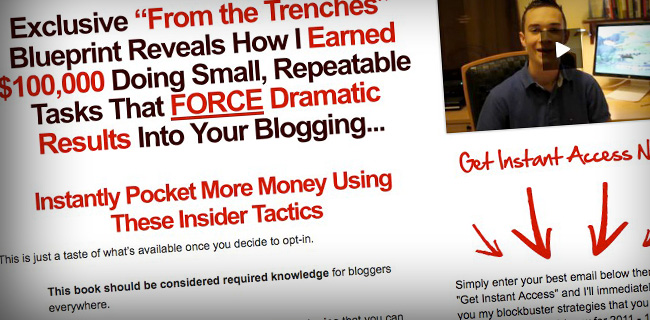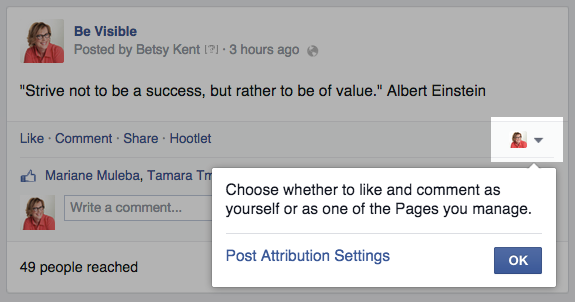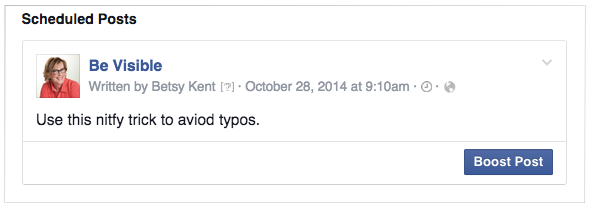Follow My 6 Step Plan For Mailing List Success
How To Build Your Mailing List – My Easy 6 Step Plan
In the past I have done a fair number of postings about building an
email list here at IncomeDiary.com — but with today’s post I wanted to take a slightly different approach.
But first I would like to ask you a question.
Are You Too Embarrassed To Build A Mailing List?
You see when I have been speaking to some coaching clients recently I noticed just how many of them felt EMBARRASSED about using their website / blog to build up a list of subscribers / potential future clients.
It was almost like they were afraid to ask for the money? I mean, what is the point being in business if you are afraid to ask for the money?
And when it comes to blogging — your mailing list is a lot of the money.
I was speaking to one person recently who is a great writer – who has filled their website with lots of great content but was reluctant to add an option for people to join a mailing list – and even when he did add it — he buried it within the site so no one would see it.
When I challenged him about it he gave me the most surprising reply.
He didn’t want to be considered a spammer! My jaw almost dropped of my face!
Building an email list does not make you a spammer!
Thinking that adding the option for visitors to OPT-IN to your mailing list / download your free report somehow makes you look bad is complete Nonsense!
But then I made a realization also – you see I thought this was such a daft idea I never thought anyone could possibly think this but when I asked around I actually found other people who felt similarly. So this post is particularly for you if you feel uncomfortable building a mailing list.
Why Would I Want To Join Your Email List?
As you can imagine I am on a large number of email lists myself and I must join several new lists each week (as well as opting out of several lists each week as they no longer serve my needs)
And the reason why I join is simple — because I like what you have written and I want to read more from you!
I mean I don’t want to have to check your website daily to see if there is a new blog post to read – I want you to email me and let me know when there is a new blog post or something that might be of interest to me.
Not 100% related — but I am even on Mailing Lists for products not even directly of interest to me — simply because I like to keep up with what is going on in other industries / markets. Of course in these cases I am only on the list of the top players in those niches – it is like a Free Education – I get to see what they are doing, what subject lines they are using and I am able to think how can I apply what they are doing to my NICHE?
Of course the truth of the matter is that those people who are a bit SHY or Embarrassed about building a mailing list do in fact suffer from POOR SELF IMAGE.
Basically they think they are not worthy of attracting followers.
They don’t actually think the have the right to be successful.
Remember as my good friend
Jerry Gillies puts it:
Making a dollar and making a difference do not have to be mutually exclusive
It really is OK to make money doing something you love and helping people at the same time.
You are in fact doing your visitors a disservice by not giving them an option to opt-in — NOT the other way round. Add an OPT-IN and let your website visitors decide for themselves.
Another Thought…
I was reviewing this post and thinking it odd that we had a SIX Step plan (rare to see a 6 step plan — it is usually 3 steps, 5 steps and 7 steps — rarely 6 steps). Anyway I made an important realization — because this is in fact a 7 step plan because the 1st step is in fact HAVING THE RIGHT ATTITUDE.
Unless you believe in yourself and the value you deliver to your subscribers – then frankly you may as well never even get bothered building a mailing list.
Our Attitude to building a mailing list determines the SUCCESS of our mailing list
When I publish this blog post I will email my subscribers to advise them of it and in return 1000’s of them will visit this blog post because of that one thing.
Really it is not that difficult (I like to think it is simple — but people seem intent on making it difficult!)
Here is just a few of the many reasons why having a list is really important:
- You can email your list every time you have a new blog post, sending a huge surge of traffic to your site!
- If you decide to launch a product, you can instantly inform all your readers and fans to come check out the sales page.
- Email promotions, sending out emails promoting a new product launch!
1. Creating Your “Hook”
Starting with the most important part of list building, giving some away in return for their email address. Creating a hook is easy, all you have to do is produce a product that you could sell but instead you give it away. Most people say this is important to get more people to sign up, it definitely does increase conversions by a lot but it also has an even powerful-er part to it, it can make you a lot of money. In fact my first 6 figures made online was through a FREE report I gave away on one of my blogs.
Let’s say you have a web design blog, you could created a report called “
17 Ways To Make More Money As a Web Designer“. In this report you teach visitors these ways, some things include them buying something that of course will genuinely help them but also make you money as an affiliate. So for example, one tip is to get business cards created and you suggest their buy them through Vista Print which of course is an affiliate link. Another suggestion could be they should become hosting resellers for their clients and then they buy a reseller account via your affiliate link. All your content needs to help them and of course make you money (by
lawrence). If you are new to affiliate marketing,
I suggest you read this guide. If you struggle for time, a 17 tips type report can be done in a couple hours quite easily so don’t feel you need to go all out with a long eBook.

My report being sent out in a email deliver by
Aweber, they report is the emai. Most people don’t bother putting together a design for an email template, however those who want to, Themeforst have some great ones to choose from.
Hopefully now you have some sort of idea of what FREE report you want to create, it doesn’t have to be a really long thing, it just needs to help website visitors in some way so that they want to buy something in the report and stay subscribed for more content. Some bloggers deliver their report in a PDF format which is automatically sent to new subscribers via your email marketing solution (I use
Aweber for this) and some bloggers fine it easier just to deliver the report in one long email, which is what I do.
2. Setting Up Your Email Opt-in Box & Funnel
I use two email marketing providers,
Aweber and
iContact. Both are similar, I hate to rely on one company, using multiple company’s is just good business sense. What these company’s do is allow you to collect email addresses, send and track emails, plus a lot more techy stuff that the typical person doesn’t really need.
Using any email provider, you will have the option to send a visitor to a page, you can either use their default thank you page but I like to do is create a new page in WordPress and thank new subscribers for opting in and to let them know that their free gift will be emailed to them straight away. As this is the point where their most interested in your subject, I also suggest several affiliate products related to my free gift which they may be interested in.
3. Have a Page Dedicated To Your Free Gift & Signing Up
The thing I see over and over again is people really enjoying the free gifts they get from signing up to a newsletter – so you must make it easy for them to share the source of this free gift (report, tip sheet etc) where their friends, customers and even family. Simply having a sidebar opt-in isn’t enough. You want to give your subscribers a link to a page detailing your offer, which they can pass on to friends, family etc. Something else I recommend is using
OptimizePress – this allows you to create squeeze pages which have converted higher then 50% which means if you can send 1000 visitors to your squeeze page, over 500 will opt-in.

I use
OptimizePress for my squeeze pages and it only took around 5 minutes, saving me at least $500 and a whole bunch of time. They have 10 different pages to choose from, depending if you want to show a video on your squeeze page, show a preview of one, a free report with an eCover – frankly they cover everything!
TOP TIP: Have your download page include comments so that readers can leave testimonials and share thoughts, this makes for great social proof!
When you visit IncomeDiary you would of seen my
popup which was produced using my WordPress plugin called
Popup Domination. I knew lightbox’s like this worked but the ones
Aweber provide had some flaws, firstly poor design, I’m not going to spend all my time and money on the perfect blog does just to devalue it with a free lightbox design. As well as that, it was missing a lot of the options I required such as setting how soon the
popup showed up, how often, what pages, customizing the design and so on. Using
Popup Domination I was able to go from around 15 opt-ins a day to over 50 a day almost immediately, which really helped me take off with my online marketing. Here are a couple
Popup Domination settings I think work really well:
- Shown every 14 days, on the second impression and not on the homepage. This means when they visit the site, the popup doesn’t show up on the first page they visit, if they enjoy your site and further navigate to a second page, this is when they are shown the popup. These settings work very well for those who are worried about upsetting regular visitors. Additionally you may want to consider having the sign up link open up in a new window so that the visitor stays on your page.
- Shown in one particular category on the first impression and target the traffic that visits the posts in that category, for example if the category on your website is about six pack abs, provide a free gift on getting six pack abs. This is for those who want to build a super targeted email list.
We have also seen that people using
Popup Domination using a theme which you can use an eCover have converted a lot higher then those without so I highly recommend you invest just a small amount of money in an eCover design related to your free gift.
5. Making Money From Your Email List
Most people reading this who want to monetize their email list will probably want to do it by promoting affiliate products. It is seriously easy money, can you imagine just sending a email to your, taking you what, 5 minutes and in return you make thousands of dollars. We are so lucky with the opportunity we have today, we just have to make sure we take advantage of it while we can. When emailing promotions, you have three main ways to go do it:
- Directly email your list a link to the sales page
- Email your list a review on your blog
- Email your list a link to a bonus page on your site where you take them through the product and offer them a bonus if they buy through your link.
Depending on the product, you will want to do different things. I prefer to email my list a link to a review on my site, this brings them back to my site, gives me a better chance at selling it as well as a better chance of them looking else where on my blog and buying something. If the product is a high price, try the bonus page, this has definitely increased my conversions. Directly emailing your list the link to the sales page is the easiest solution, it doesn’t convert as well but it literally takes 2 minutes to do. I have to admit, I feel bad emailing a link directly to the sales page because it makes me look like I don’t care, I prefer to put in more effort and in return I make a lot more. For more help finding affiliate products to promote,
check out this post.
6. Increasing Earnings and Email Open Rate
The most exciting feature for me is being able to send another email to the same list that I emailed the day before, but this time it only sends to the people who didn’t open the email the day before. I simply keep the email the same but change the title in case the other one wasn’t enticing enough for them. Figures don’t lie, let me show you how it performed:
The first email sent out got: 33.8% open rate getting 523 clicks to my website.
The second email which went to only the unopened emails got: 16.1% open rate and an additional 156 clicks to my website.
This is an example of a small list I have hosted with
iContact. 156 extra visitors to my post may not seem like a huge amount but when I tell you it was convert at $3.00 a click, that’s an extra $468.00. Before using this option that would not have been possible. This feature comes with both
iContact and
Aweber.
The second thing I suggest you do is try split testing part of your list or if you have several different lists, try split testing one before sending to the rest. Split testing basically allows you to send different emails to the same list and compare which converts the best. In the example below you will see I sent an email to one of my lists with two different headlines, it was sent to 12,000 people and one email title performed better than the other, now that I know which one converts best, I can send that title to the rest of my email lists.

The next thing you want to do is add an autoresponder series to your email list. What this does is automatically email your subscribes at a set time for months to come, for example 1 day after signing up, then again 4 days later, then again 3 days later and so on. You want to do this because new subscribers most likely would not have seen past content and this gives you another opportunity to earn from those blog posts you have done. For example I have a review I did a while back that earned me over $7,000 when I emailed my subscribers a link to the article, that clearly converted very well for me. It’s proven to convert so I want to send future new subscribers to the post, so I set up an auto-responder for a few days after they opt-in to send out automatically that email I sent months ago to my list, this means they will get fresh content and give me a chance to earn again and again.
BONUS: Email Marketing FAQ’s
I’m stuck trying to do some of these things with iContact/Aweber. No problem, the thing I love about these companies is the fact that they both have live chat so you can just login and talk to one of their team and ask them questions about any problems you may be having.
How often should I email my list? I email every time I have something that is WORTHWHILE them looking at. (Note the word WORTHWHILE – think every time you email — are you adding value, are you creating value) It is easy to be lazy (and I have been guilty of it) but it is vital to keep the VALUE up there and in turn keep your connection and rapport with your subscriber.
This can only be done by putting them first and delivering value and products that improve their life / their business.
I know a lot of marketers who email promotion day after day. I would say not to do that – rather you should split up your promotions with free content posted on your blog as well as your affiliate marketing promotions. This way visitors are less likely to object to being heavily marketed to and indeed are more likely to buy because they appreciate the value you deliver.
VERY IMPORTANT: Don’t promote for the sake of promoting and earning some affiliate commissions – PROMOTE only when you are a 100% confident in the product and the individual who created it.
What should my FREE gift format be? To be honest, it can anything you like, such as a Video, Audio or PDF download. The reason I prefer to have a written gift is because you can’t skim video or audio and people live very busy lives and you can’t expect them to sit through something with out knowing whats coming up.
There are so many email providers (AWeber, iContact etc), which one should I choose? I have tried many different providers, I personally use
AWeber because that’s who all the big names were using, if it was good enough for them, it was good enough for me. I personally like having accounts with two different company’s (2 hosts, 2 autoresponders, 2 domain registrars etc) because I feel safer then relying on one company, that is why I started using iContact. I like iContact and would happily recommend either of these providers.
http://www.incomediary.com/outstanding-email-list-building-success-in-6-easy-steps

































